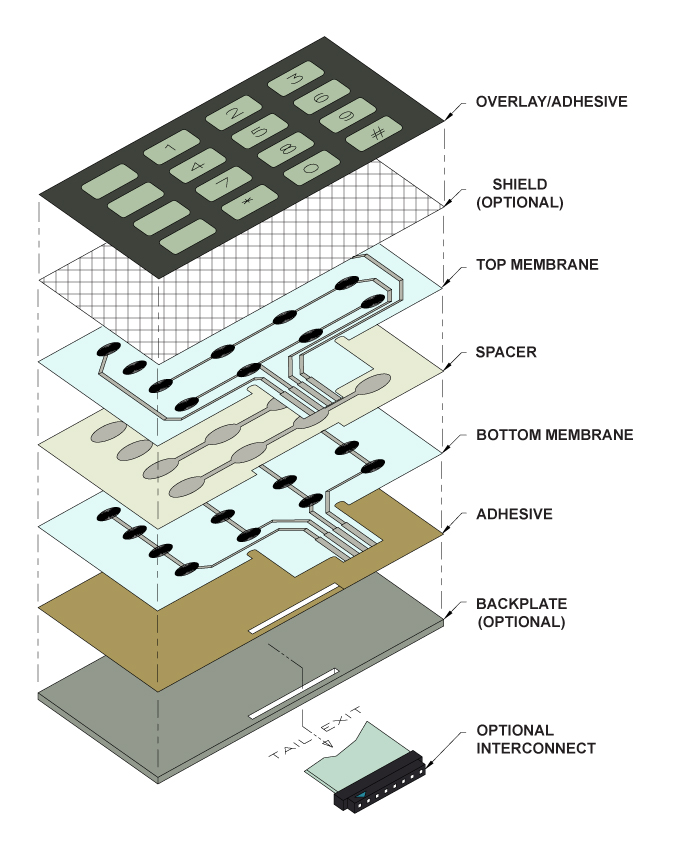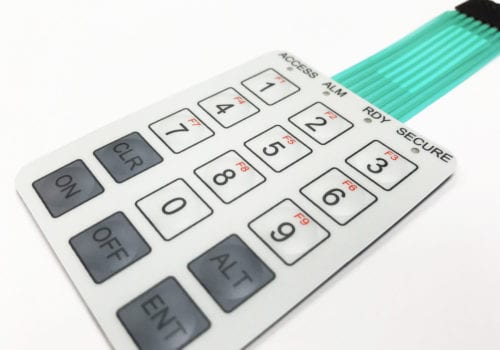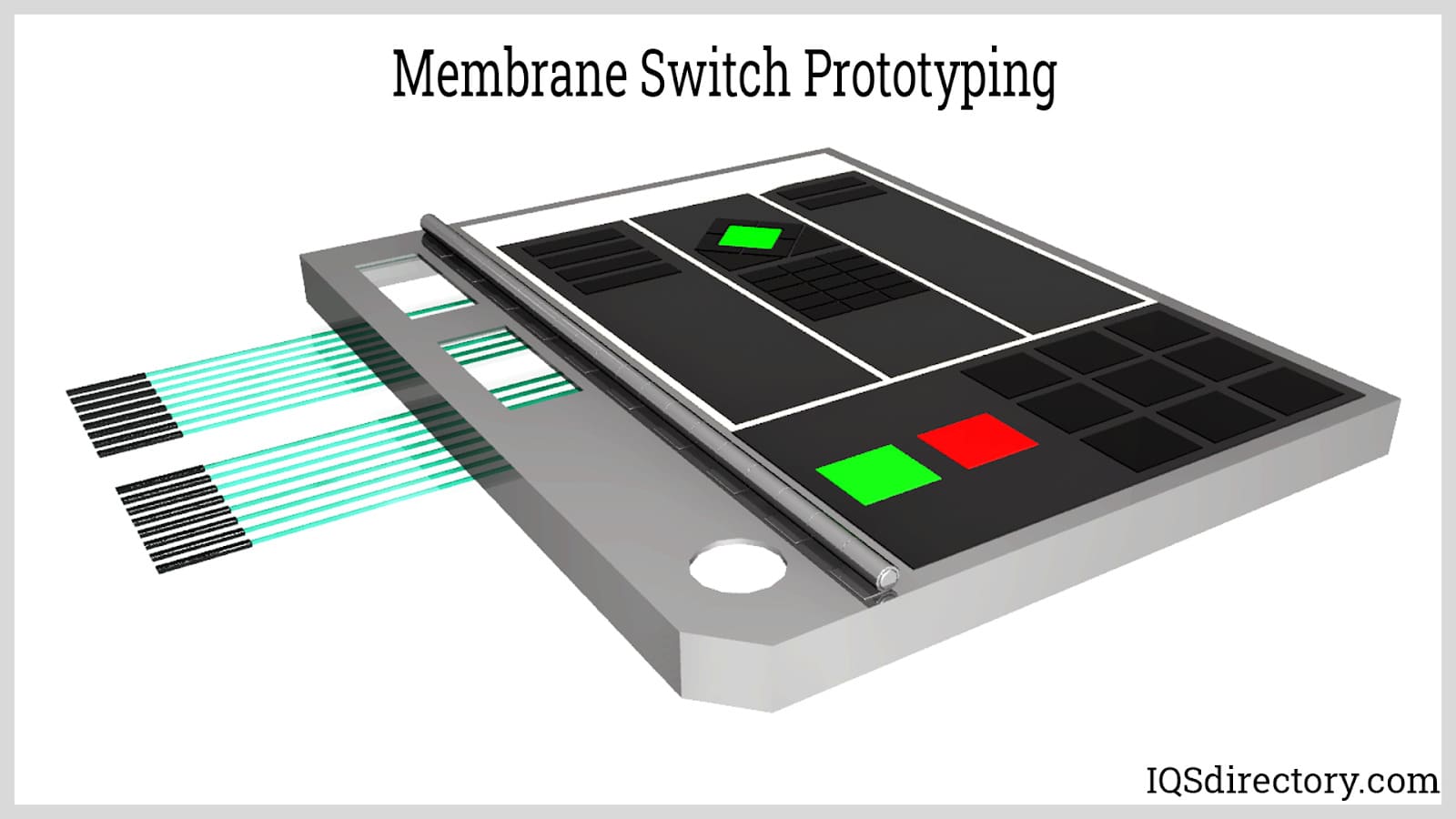Projects requiring precision should always involve a qualified membrane switch manufacturer from the start.
Projects requiring precision should always involve a qualified membrane switch manufacturer from the start.
Blog Article
All About Membrane Switch Over: Comprehending Its Design and Capability
When you think concerning the control user interfaces in modern-day devices, membrane buttons frequently come to mind. Allow's explore what collections membrane layer switches apart from other control systems.
What Are Membrane Switches?

Membrane layer buttons can additionally be personalized concerning shape, dimension, and graphics, enabling manufacturers to create one-of-a-kind user interfaces customized to particular products. Generally, membrane layer buttons play a significant duty in improving user experience throughout a wide array of applications.
Just How Membrane Switches Job
When you push a secret on a membrane layer switch, it activates an uncomplicated yet reliable mechanism. The leading layer, commonly made of flexible product, lowers onto a conductive layer under it. This action bridges the space in between conductive traces, completing an electric circuit. As quickly as the circuit shuts, it sends out a signal to the gadget's controller, which analyzes your input.
You'll observe that the tactile feedback differs based upon the switch style, using either a soft click or a more noticable feedback. Once you launch the key, the membrane returns to its initial position, resuming the circuit and quiting the signal. This procedure occurs virtually instantaneously, making sure a receptive customer experience.
Membrane buttons are popular due to their longevity and resistance to dirt and dampness, making them ideal for different applications, from household home appliances to clinical tools. Understanding this operation helps you appreciate their prevalent use.
Secret Parts of Membrane Layer Buttons
Recognizing the essential components of membrane layer switches is fundamental for realizing their performance and style. The safety layer guards versus environmental factors and use, extending the button's life expectancy. By understanding these elements, you'll gain understanding right into how membrane layer switches run and their relevance in different applications.
Products Utilized in Membrane Layer Switch Style
The efficiency and longevity of membrane switches over heavily rely on the materials used in their style. You generally run into polyester and polycarbonate as key substrates because of their superb stamina and versatility. These materials resist scratches and chemicals, making them suitable for requiring environments.
The conductive layers typically make use of silver or carbon, picked for their reliability and conductivity. membrane switch manufacturer. Silver supplies exceptional efficiency, while carbon is an economical alternative. For the overlay, you may think about a matte or glossy coating, relying on your visual demands and customer experience
Make specific to select adhesives that withstand environmental variables like temperature and moisture. Selecting the right materials will certainly ensure your membrane button stands the test of time.
Style Factors To Consider for Membrane Switches
While creating membrane buttons, it's crucial to take into account numerous elements that affect their capability and individual experience. Start by concentrating on the layout and switch size; make specific they're user-friendly and easy to browse.
Confirm your design accommodates ecological factors, like moisture or temperature level variants, which can affect performance. By thoroughly considering these elements, you'll develop a membrane layer button that boosts use and fulfillment.
Applications of Membrane Switches
Membrane layer buttons are flexible components found in numerous applications, from industrial tools to customer electronic devices. You'll see their impact in machines that require resilient user interfaces and in tools that gain from sleek layouts. Comprehending these applications helps you value the performance and practicality of membrane layer buttons in day-to-day technology.
Industrial Devices Use
When you're aiming to boost the capability of commercial tools, membrane layer switches offer a reputable service that incorporates longevity with easy to use layout. These buttons are best for harsh settings, offering resistance to dirt, moisture, and chemicals. try this out You'll discover them in control panels for manufacturing makers, HVAC systems, and medical tools, where precision and responsiveness are crucial. Their reduced account implies they fit seamlessly into numerous equipment, conserving useful area while maintaining convenience of use. With adjustable graphics and backlighting options, you can create an user-friendly user interface for operators, improving efficiency and safety and security. Plus, their lengthy lifespan minimizes upkeep costs, making them a smart financial investment for your commercial applications. Accept membrane switches to simplify your procedures and improve overall efficiency.
Consumer Electronics Combination
In the domain of consumer electronics, membrane switches play a necessary duty in boosting individual communication and anchor gadget performance. You'll discover them in gadgets like microwaves, remotes, and gaming consoles, offering a smooth way to interact with modern technology. Their streamlined layout enables very easy assimilation into different items, making controls user-friendly and easy to use. With their capacity to integrate graphics and backlighting, you can take pleasure in a contemporary aesthetic that matches the device's general appearance. Membrane switches additionally guarantee longevity and resistance to dirt and moisture, prolonging the life expectancy of your electronic devices. By selecting membrane layer switches, you boost not simply the performance however likewise the style of your devices, making daily communications smooth and pleasurable.
Advantages and Downsides of Membrane Layer Buttons
While membrane layer switches supply a variety of benefits, they likewise come with some drawbacks that you need to consider. One significant benefit is their compact layout, making them suitable for space-constrained applications.

Membrane layer buttons can have a shorter life-span compared to mechanical buttons, specifically under hefty usage. They can likewise be much less tactile, which might influence user comments during operation. Balancing these pros and disadvantages will certainly help you figure out if membrane switches are the ideal fit for your task.
Regularly Asked Inquiries
The Length Of Time Do Membrane Layer Changes Commonly Last?
Membrane layer switches normally last between 5 to 10 years, depending upon use and ecological problems. You'll intend to review aspects like wear, direct exposure to dampness, and temperature changes to assess their longevity successfully.
Can Membrane Changes Be Customized for Specific Layouts?
Yes, you can tailor membrane layer buttons to fit particular layouts (membrane switch manufacturer). You'll have the freedom to pick shades, shapes, and designs that match your job's requirements, guaranteeing they blend perfectly with your general aesthetic
What Is the Cost Array for Membrane Layer Switch Over Production?
The cost variety for membrane layer switch production normally drops between $1 and $10 each, depending upon variables like design intricacy, amount, and materials. You can get quotes from makers to find the ideal alternative.

Are Membrane Layer Changes Water-proof or Immune?
Membrane layer buttons can be created to be water resistant or immune, depending on materials utilized and building approaches. If you require them for damp settings, guarantee you define those requirements throughout the layout process.
How Do Membrane Layer Changes Contrast to Typical Buttons?
Membrane switches are normally thinner and much more versatile than typical switches, providing a sleek layout. They're commonly easier to clean up and integrate, but could not supply the tactile feedback you're made use of to with mechanical alternatives.
Final thought

Report this page